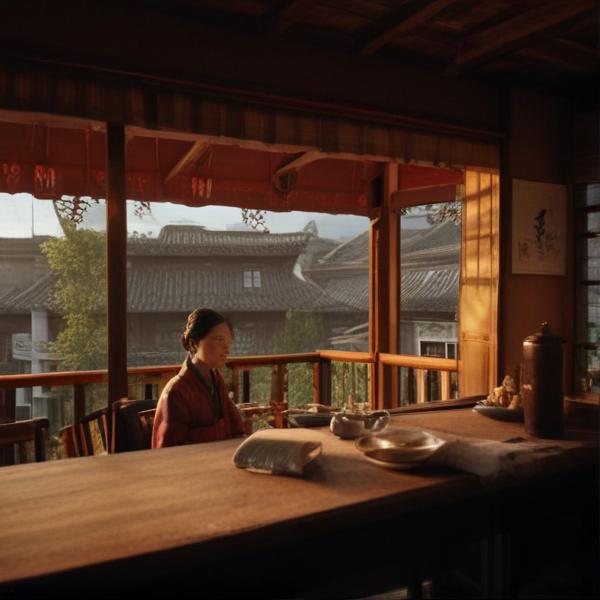基本信息 (Basic Information)
含义与用法 (Meanings & Usage)
中文核心释义 (Core Chinese Meaning): 年长的妇女,老妇人,常用于称呼祖母、婆婆等,也可指妻子(方言)
英文核心释义 (Core English Meaning): elderly woman, old lady; grandmother or mother-in-law, sometimes wife (in dialects)
象形意义 / 为何这么写 (Pictographic Meaning / Writing Rationale)
文言文释义 (Classical Chinese Meaning)
与现代意义相近,多指年长妇女或祖母等。Similar to modern meaning; mostly refers to elderly women or grandmothers.
深入学习 (In-depth Study)
字源故事 (Origin Story)
字形演变 (Character Evolution)
常用词语和例句 (Common Words & Examples)
婆婆 (mother-in-law (husband's mother))
她的婆婆非常善良。
Eng: Her mother-in-law is very kind.
外婆 (maternal grandmother)
我小时候常常住在外婆家。
Eng: I often lived at my maternal grandmother's house when I was young.
老婆 (wife (colloquial))
他带着老婆去旅游了。
Eng: He went traveling with his wife.
相关成语 (Related Idioms)
相关成语信息待补充。Related idiom information pending.
多语言翻译 (核心释义) (Translations (Core Meaning))
- French: vieille femme; belle-mère; grand-mère
- German: alte Frau; Schwiegermutter; Großmutter
- Spanish: anciana; suegra; abuela
- Italian: donna anziana; suocera; nonna
- Portuguese: mulher idosa; sogra; avó
- Russian: пожилая женщина; свекровь; бабушка
- Arabic: امرأة مسنة؛ حمات؛ جدة
- Persian: زن سالخورده؛ مادرشوهر؛ مادربزرگ
- Dutch: oude vrouw; schoonmoeder; grootmoeder
- Polish: starsza kobieta; teściowa; babcia
- Vietnamese: người phụ nữ già; mẹ chồng; bà ngoại
- Ukrainian: літня жінка; свекруха; бабуся
视频学习资源 (Video Learning Resources)
通过以下链接在热门视频网站搜索 "婆" 的更多讲解:
Search for more explanations of "婆" on popular video sites:
- 在 Bilibili.com 搜索 "婆 字源 说文解字" (Search on Bilibili)
- 在 YouTube.com 搜索 "婆 character origin etymology" (Search on YouTube)
网络参考 (Web References for "婆") ()
网络内容摘要 (Web Content Summary):
核心含义:“婆”主要指“年长的女性”,常用意义为“婆婆”(husband’s mother, mother-in-law),也泛指老妇人。有时也用于女性的昵称,如“婆娘”指妻子或妇女。Core meaning: "婆" mainly refers to an "elderly woman," and commonly means "mother-in-law." It can also generally refer to an old lady, or be used in nicknames for women.
字形起源与文化背景:该字从“女”(表示与女性有关),表音部分不详。汉字“婆”与家庭和亲属关系密切相关,在中国文化中,”婆媳“(mother-in-law and daughter-in-law)的关系经常成为生活与文学讨论的话题。Pictographic origin & cultural background: The character includes the radical "女" (woman/female), reflecting its relation to women and familial roles. "婆" is often associated with family culture in China, especially the sometimes complex relationship between a mother-in-law and a daughter-in-law.
- 常见词语:如“婆婆” (mother-in-law), “婆媳” (mother-in-law and daughter-in-law), “婆娘” (wife, woman), “婆婆妈妈” (overly fussy, nagging, often used to describe someone who is too talkative or meticulous).Common words: For example: "婆婆" (mother-in-law), "婆媳" (mother-in-law & daughter-in-law), "婆娘" (wife/woman), "婆婆妈妈" (nagging or fussing, often describing someone overly meticulous).
- 易混淆点:需避免与“妈”(mother)、“娘”(mother/woman)等直接称呼混淆,“婆”常用于亲属关系中的辈分表达。Confusions: Do not confuse "婆" with "妈" (mother) or "娘" (mother/woman); "婆" usually indicates a generational relationship, especially in marriage-based kinship terms.
成语/搭配:“婆婆嘴”、“婆媳关系”、“婆婆妈妈”等反映汉语中对家庭成员或性格特征的描述。Idioms/collocations: Phrases like "婆婆嘴" (nagging), "婆媳关系" (mother-in-law and daughter-in-law relationship), "婆婆妈妈" (overly fussy or long-winded) reflect how the character is used to describe family members or personality traits.
汉字"婆"的起源与演变(源流)-汉字字源网
汉字字源网收录2975个汉字的源流词条,基本涵盖了常用汉字的字源分析,是学习和研究汉字的必备工具。 ... ,是学习和研究汉字的必备工具。 网站首页 词典首页. 请输入您要查询的汉字: 汉字: 婆: 字源: 婆.
婆《汉字字源》_汉字「婆」_婆在汉字字源中的解释 - 国学大师
婆什迦罗 婆侯伎 婆儿 婆儿气 婆兒 婆兒氣 婆兰 婆利国 婆国伽蓝洲 婆妈 婆姨 婆娑 婆娑儿 婆娑兒 婆娑沒索 婆娑没索 婆娑石 婆娑起舞 婆娘 婆娘子 婆婆 婆婆口絮,媳婦耳頑 婆婆嘴 婆婆妈妈 婆婆媽媽 婆婆家 婆婆慢慢 婆婆纳 婆媳 婆媽 婆嫂船 婆子 婆子口舌 ...
更多图片 (婆 More Images) ()
